Pawsome: Pet food delivery service
UX case study for pet food delivery service website

Project overview
The product:
The problem:
The goal:
My role:
Responsibilities:

Understanding the user
User research: summary
I conducted online interviews and created empathy maps to gain a deeper understanding of users’ feelings, needs, and behavioral patterns. This research bridges the gap between the design team and users.
The research confirmed my primary assumptions of a multi language option and the addition of transcripts. Additionally, the research also revealed that the inclusion of transcripts is beneficial not only to non-English speakers, but also to a wide range of users.
Finding 1: User Needs and Preferences
What are the most critical factors that influence users when choosing a dog food delivery service?
- Convenience and flexibility in delivery scheduling … 70%
- Wide range of dog food brands and dietary options … 22%
- Cost-effectiveness … 8%
What delivery frequency do users prefer for dog food, and do they show a preference for one-time orders or subscription services?
Finding 2: Pain Points and Challenges
What challenges or frustrations have users encountered with existing dog food delivery services?
Finding 3: User Experience and Interaction Preferences
What platforms do users prefer for accessing and interacting with a dog food delivery service?
- Mobile devices … 51%
- Website … 43%
- Other … 6%
What features would enhance users' experience and engagement with a dog food delivery service?
User persona
Sophia Everhart
- Education: College graduate
- Hometown: Seattle
- Marketing coordinator
“I have a busy schedule and sometimes forget to order pet food.”
Sophia is 28-year-old marketing enthusiast based in Seattle. She enjoys exploring local cafes, taking weekend hikes with her dog, Pogo, and attending art events to keep her creative juices flowing.
She is frustrated when she cannot find an easy way to change the delivery schedule for pet food and has to spend time modifying it.
Problem statement:
Frustration:
- Forgetting to reorder pet food and facing delays.
- Feeling frustrated when there’s a disruption in her pet’s feeding routine due to ordering issues.
- Dealing with the hassle of last-minute arrangements when she realizes the food is running low.
Goals:
- Ensure a consistent supply of pet food without running out.
- Have control over the scheduling and timing of pet food deliveries.
- Manage her pet’s food supply in a convenient and reliable way.
Starting the design
1. Paper wireframes
For these low-fidelity wireframes, I focused on the following
- Creating a home page that leads to the customer dashboard, displaying currently subscribed items and the next auto delivery date.
- The dashboard page offers options for editing the next delivery date, items, and address.
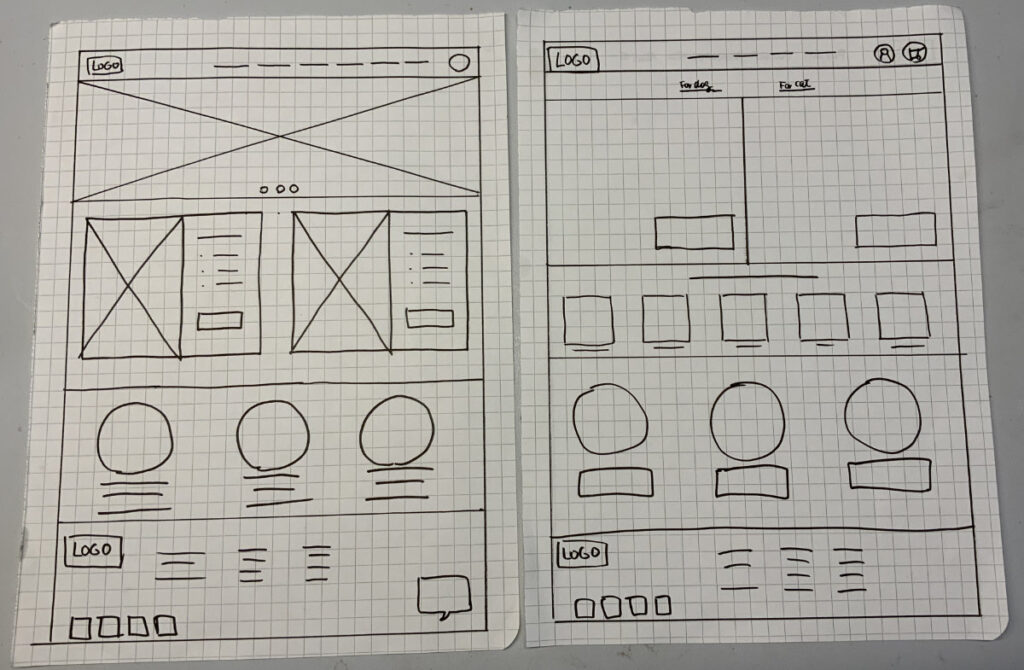
2. Digital wireframes
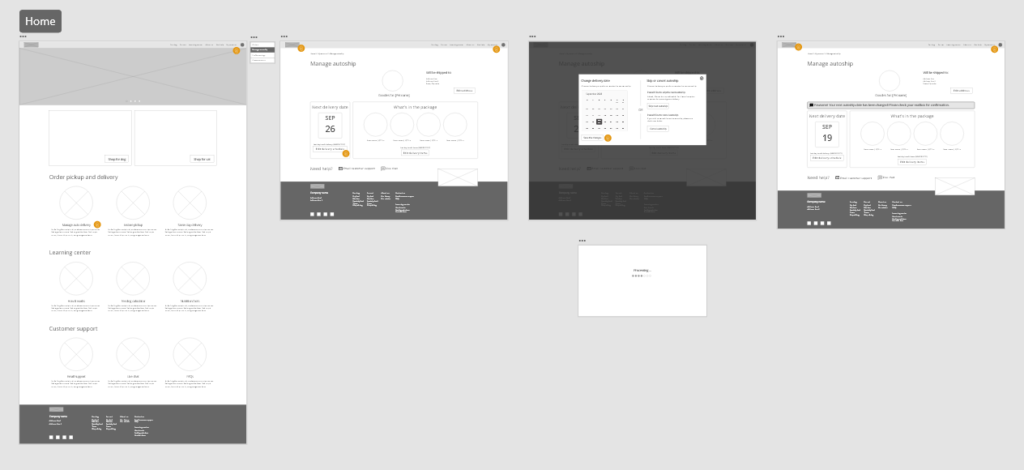
3. Low-fidelity prototype
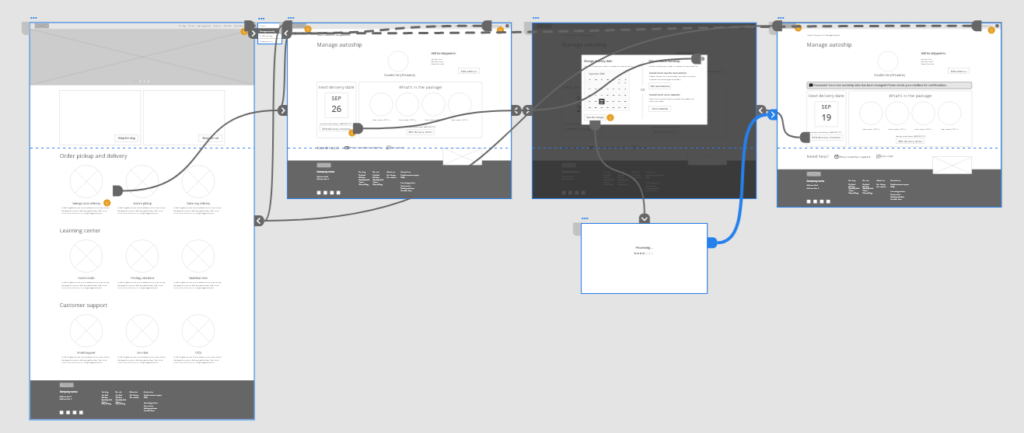
Usability study: findings
The first usability study was conducted with the low-fidelity prototype. After collecting findings from user input and incorporating them into the high-fidelity prototype design, I conducted the second usability study.
Round 1 findings
Round 2 findings
Refining the design
Key mockups
The refined version of the high-fidelity prototype shows an improved task flow, clear, and comprehensive design, aimed at increasing user accessibility
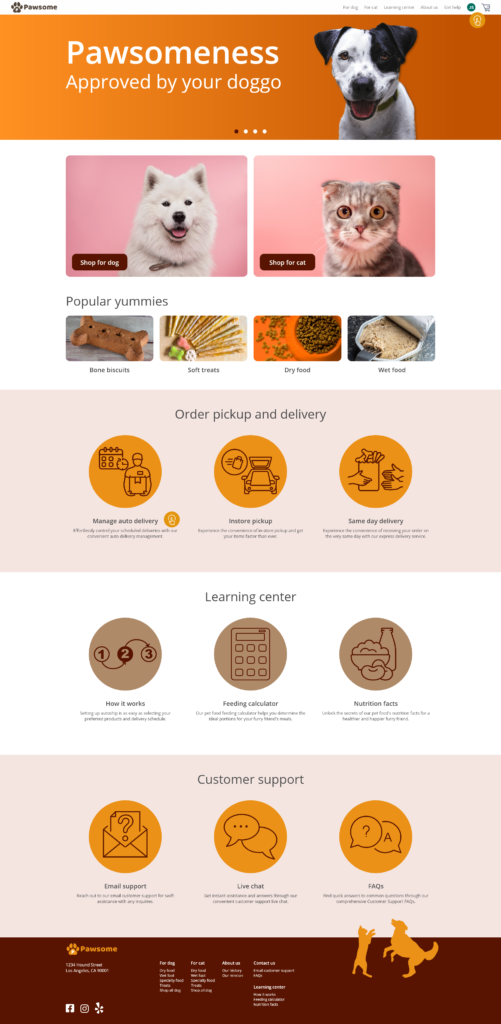

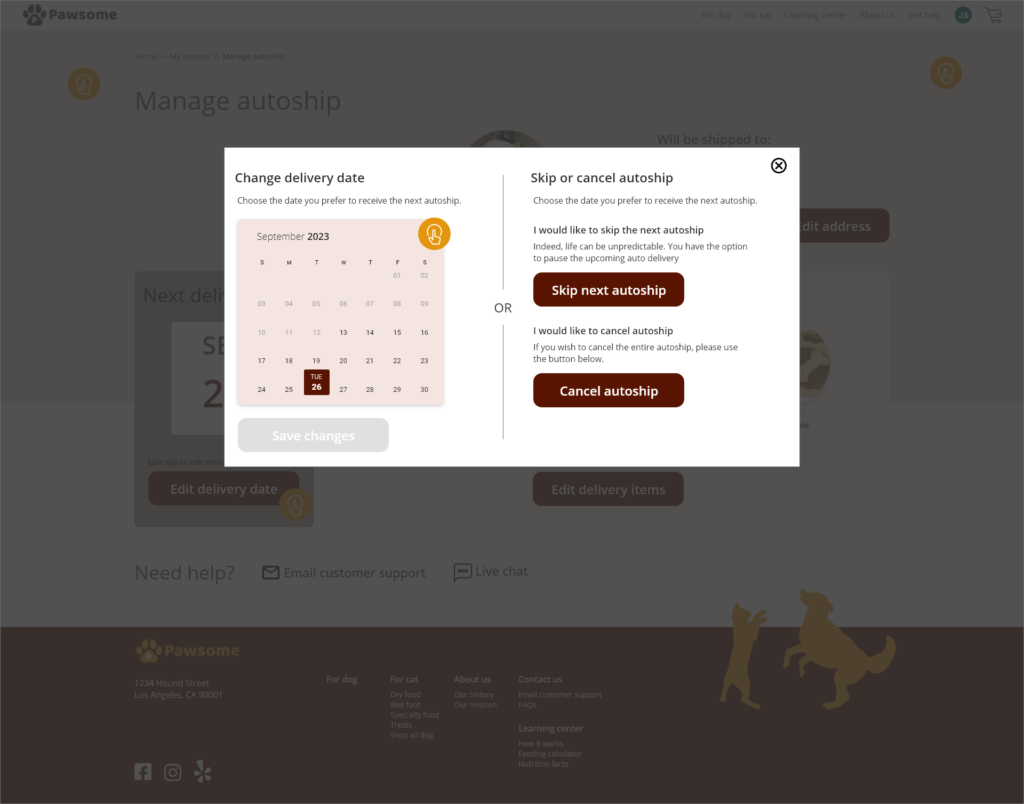


Takeaways
Impact:
The website improves user trust and satisfaction as the convenience and reliability of the service lead to increased customer retention.
“Thanks to this pet food delivery website, I no longer have to worry about running out of food for my furry friend. It's a real lifesaver!”
What I learned:
From this pet food delivery website case study, we have learned the importance of user-centered design, streamlined navigation, clear information presentation, and the potential to enhance user satisfaction and loyalty through convenient and reliable service.
Thank you!
Let's connect
Thank you for exploring my UX case study portfolio. If you have any questions or would like to discuss potential opportunities, please don’t hesitate to contact me. I look forward to connecting with you!